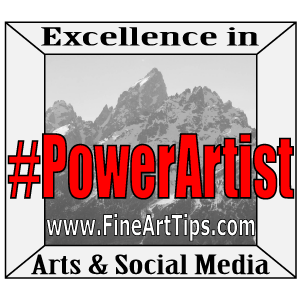This is my most recent painting, just finished this week. I'm using a photo that I shot during one of my recent trips to St. John, USVI, as a reference for this painting. This harbor scene was photographed late in the day, just as the sun was beginning to set. The light from the sunset is reflected off the white hull of the old ship, and the reflections bounce off the suface of the water in the forground.
Here you can see my reference photo next to my drawing. I covered the drawing of the boat with masking fluid, to preserve the white of the paper for painting later.
Working from light to dark, I start by painting the reflected colors of the sunset on the ship's hull and the water surface, using yellow ochre, cadium yellow, and cadium orange. I used cobalt mixed with violet to create the shadowed color of the ship's white hull.
For the water, I started with cobalt for the lightest values and used indigo and payne's grey for the darker areas. I don't want the water to appear flat and lifeless, so I'm varying my colors and values in large areas.
I'm using large soft brushes at this point in the painting , to maintain a loose painterly effect. A large squirrel mop is used to paint wet-in-wet, and when that dries, I switch to a 3/4" flat squirrel to paint movement in the water. For details, I used a large round Kolinsky sable. These brushes are all very soft, and lend to a looser effect.
After each layer of paint is dry, I can adjust the colors and values by adding more layers to make areas darker or deeper, and I can lighten areas by lifting pigment off the painting.
Here you can see the angle of the flat brush used to create movement in the water. A large soft flat brush holds and releases a lot of fluid, which allows me to keep my brush stokes loose and fresh. Drawing the brush-edge at an angle in varying strokes across the painting creates these ripples in the water.
These soft Kolinsky and squirrel brushes that I'm using on this painting are from
Raphael by Sennelier, and are some of the finest natural bristle brushes available. Top quality materials and supplies are essential to creating great art.
Layering the darkest values and colors last, a realistic impression of movement is created in the water.
When the backgound is mostly finished, I remove the masking fluid from the boat, and I reapply it just to a few areas that still need to be protected. Now I can start painting the darker details, and begin to show dimension and roundness to the boat by painting in some shadows.
When the shadows are dry, I begin to layer color on the boat. The red of the inflatable is painted using carmine and cadium orange. As I paint colors on the boat, I also paint the matching reflections on the water while I have the correct color still on my brush.
At this point, I've switched to a synthetic round brush which is stiffer than the natural brushes I was using earlier. The stiffer brush allows me to maintain much more control and paint the details with more precision.
The last of the masking fliud is removed, leaving white areas where I can now paint the final details of the trim. The water felt too cold for me, so I glazed some yellow ochre on top of the blue on the right side of the painting, which created a warm green tone and added to the translucency of the water.
Cobalt blue is painted for the bumper trim, and hand-holds and labels are painted to make the final details.
A few darker areas are made darker, and some tiny details are refined. To add to the effect of the sunlit glare on the inflatable, I used a damp brush and lifted some of the pigment off the red part of the boat and off of the blue bumper trim, which lightened it just a little and gives it the effect of glare from bright sunlight washing out the colors. I think it's done, but I'll put it away for a a couple of weeks before I decide!

